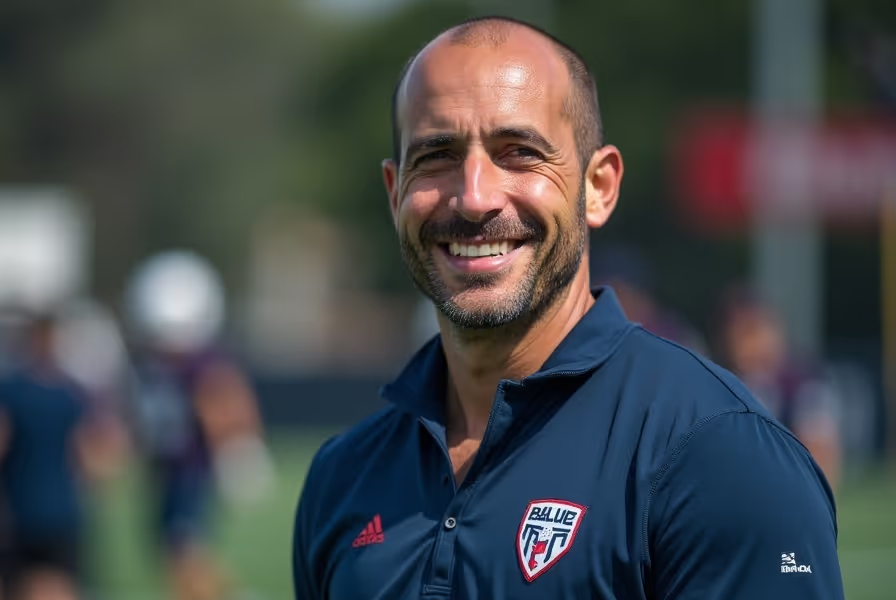The Evolution of Athletic Training: Influential Figures Who Changed the Game
Athletic trainers often work tirelessly behind the scenes, helping athletes achieve peak performance and recover safely from injuries. Over the years, certain athletic trainers have made a significant impact on professional sports, college athletics, and the overall field of sports medicine. Their expertise, dedication, and innovations have influenced athlete care and inspired countless aspiring trainers.
Pioneers in Athletic Training: Setting New Standards
Athletic training history is filled with trailblazers who have shaped how sports injuries are treated and prevented. As the industry evolved, these individuals brought forth new techniques, research, and best practices that raised the standard of care.
- Chuck Kimmel: As a former president of the National Athletic Trainers’ Association (NATA), Kimmel promoted the professional growth and recognition of athletic trainers. He advocated for better education and licensing standards, ensuring trainers received the respect and resources they deserved.
- Marjorie Albohm: Known as one of the first women leaders in the field, Albohm was instrumental in expanding opportunities for female trainers. She advanced research on injury prevention and was among the first women inducted into the NATA Hall of Fame.
- Lindy Infante: Though best known for his coaching, Infante’s early career as an athletic trainer saw him implement scientifically backed strength and conditioning programs. His holistic approach bridged gaps between coaching, athletic training, and athlete performance.
Key Contributions of Athletic Trainers to Sports Medicine
Modern sports performance relies on a comprehensive approach to health and wellness. The work of renowned trainers includes:
- Developing evidence-based injury prevention protocols
- Pioneering rehabilitation techniques athletes use for rapid, safe recovery
- Collaborating with team doctors to create nutrition and conditioning plans
- Promoting mental health and holistic well-being for athletes
- Educating athletes and coaches on concussion management and emergency action plans
The impact of these practices is now seen across major sports organizations, from NCAA athletic departments to NFL and NBA sidelines.
Leaders Who Made Athletic Training Mainstream
For much of the 20th century, athletic training operated behind the curtain. Several well-known trainers changed its public perception by demonstrating its essential role in athlete longevity and performance on the national stage.
- Kent Falb: With more than three decades as the head athletic trainer for the Detroit Lions, Falb was pivotal in advancing sports medicine in the NFL. He developed protocols for on-field emergency care and mentored hundreds of trainers now working across the league.
- Susan Yeargin: Dr. Yeargin is known for her research on heat illness in athletes, a major concern for high school and college programs. Her guidelines for hydration and heat safety are recognized by athletic programs nationwide.
- Bill Buhler: As the Los Angeles Angels’ trainer for decades, Buhler invented devices and techniques now standard in baseball care. His impact continues today, with devices like the Buhler stick still part of many MLB athletes’ routines.
Athletic Trainers’ Lasting Legacy in Education and Mentorship
One of the biggest impacts athletic trainers have is inspiring the next generation. Legendary trainers have shaped college curriculum, led workshops, and mentored emerging professionals.
- Mark Gibson: An advocate for athletic training education, Gibson has led multiple accredited college programs, helping standardize athletic training degrees and practical experiences nationwide.
- Rod Walters: Walters served at large universities and consulted for several pro teams, sharing advanced techniques for emergency preparedness and sports injury prevention with thousands of future trainers.
Breaking Barriers: Trailblazing Trainers from Diverse Backgrounds
Diversity in athletic training has grown, thanks to leaders who broke new ground and fostered inclusivity.
- Ronnie Barnes: As the New York Giants’ head trainer, Barnes is one of the first African American trainers in the NFL. He has championed diversity in sports medicine leadership positions, influencing countless aspiring minority trainers.
- Marjorie King: An expert in biomechanics, King’s work with women’s sports and injury prevention helped raise awareness about differences in athlete health needs. She continues to educate trainers on gender-inclusive best practices.
Most Searched Athletic Trainers and Their Signature Successes
Curious about the athletic trainers who are trending in search results and sports news? These trainers are regularly mentioned for their high-profile contributions.
- Mike Murphy: Legendary figure in track and field, credited with early training innovations.
- Chris Kingsley: Known in the NHL for advancing sports science, especially with the Los Angeles Kings.
Their influence is felt not just through the teams they serve, but also in the protocols, products, and safety standards that benefit athletes everywhere.
Questions About Athletic Trainers Who Made an Impact
What does an athletic trainer do in professional sports?
Athletic trainers in professional sports provide injury prevention, immediate care for athletes, rehabilitation of injuries, and support for overall athlete health. They work closely with doctors and coaches to maximize player performance and safety.
How do athletic trainers become well-known in their field?
Athletic trainers gain recognition by working with high-profile athletes or teams, developing innovative treatment protocols, publishing research, mentoring others, and holding positions in national organizations like the NATA.
Who was the first woman recognized as a leader in athletic training?
Marjorie J. Albohm is widely acknowledged as a pioneering woman in athletic training. She played key roles in advancing women’s participation and research in the field, and is a member of the NATA Hall of Fame.
What impact do athletic trainers have on athlete safety?
Athletic trainers help reduce injuries through prevention programs, provide emergency care during games, and develop safe return-to-play guidelines. They are essential for athlete health in collegiate, professional, and youth sports.
Emerging Trends in Athletic Training Careers
If you are considering a career as an athletic trainer, you can look up to these professionals for inspiration. The field now offers broader opportunities, such as:
- Sports science research and development
- Direct athlete care at all competition levels
- Roles in physical therapy clinics, rehabilitation centers, and military organizations
- Education and program development in colleges and universities
Success comes from a commitment to lifelong learning, passion for helping athletes, and willingness to adapt as sports medicine evolves.











.svg)



